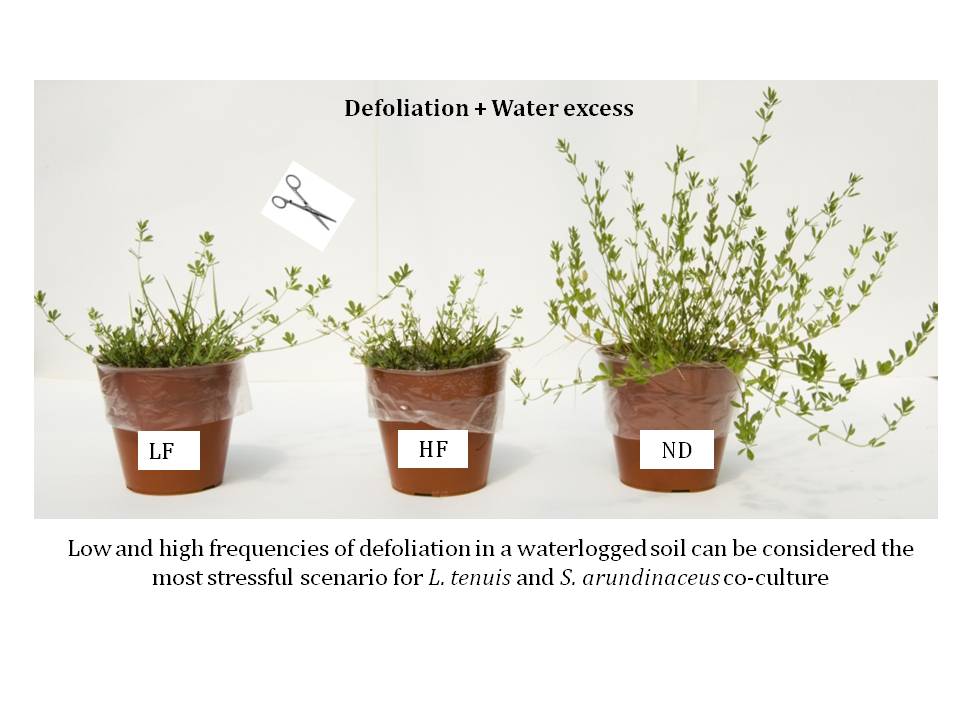Lotus tenuis and Schedonorus arundinaceus co-culture exposed to defoliation and water stress
DOI:
https://doi.org/10.48162/rev.39.044Palabras clave:
Co-cultivo Lotus tenuis - Schedonorus arundinaceus, nutrición P y N, estrés hídrico, defoliación, microorganismos edáficos nativosResumen
The present study aimed to investigate the effect of defoliation frequency (low and high) and water stress (excess or deficit) on biomass production, P and N nutrition, and symbiosis with native soil microorganisms on a Lotus tenuis and Schedonorus arundinaceus co-culture in a pot experiment. Combined effects of defoliation frequency and water stress affected plant accumulated shoot biomass. L. tenuis root biomass decreased in response to defoliation and water stress, while S. arundinaceus root biomass was similar between non-defoliated and defoliated plants, at all water levels. Low and high frequencies of defoliation in a waterlogged soil can be considered the most stressful scenario for L. tenuis and S. arundinaceus co-culture. Colonization of arbuscular mycorrhizal fungi in L. tenuis roots and dark septate endophytes colonization in S. arundinaceus roots were affected by both factors, whereas arbuscular mycorrhizal colonization in S. arundinaceus was affected only by water stress. Both plants tolerated defoliation and water stress due to the interaction between the translocation of nutrients and carbon compounds from roots to shoots, and P and N absorption (plus N2 fixation in L. tenuis).
Highlights:
- Both plants tolerated defoliation and water stress due to the interaction between the translocation of nutrients and carbon compounds from roots to shoots, and P and N absorption (plus N2 fixation in tenuis).
- Low and high frequencies of defoliation in a waterlogged soil can be considered the most stressful scenario for tenuis and S. arundinaceus co-culture.
- Defoliation frequency increased AM colonization in plant roots under well watered and water deficit conditions.
- arundinaceus roots were co-colonized by AM fungi and DSE.
- Promoting the presence of tenuis through low defoliation frequency would improve forage yield and quality with the maintenance of AM symbiosis in legume–grass communities.
Descargas

Descargas
Publicado
Cómo citar
Número
Sección
Licencia

Esta obra está bajo una licencia internacional Creative Commons Reconocimiento-NoComercial-CompartirIgual 3.0.
Aquellos autores/as que tengan publicaciones con esta revista, aceptan las Políticas Editoriales.










.jpg)




